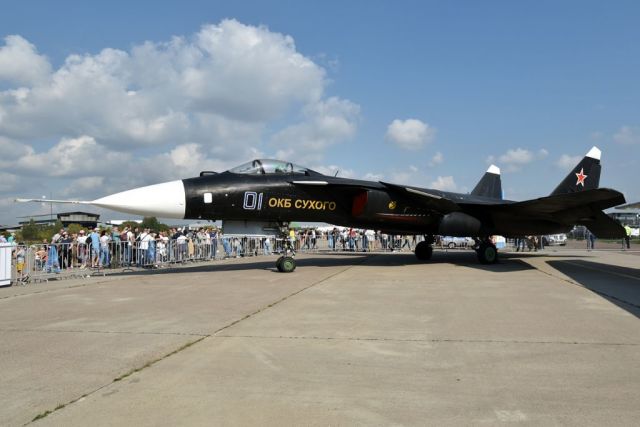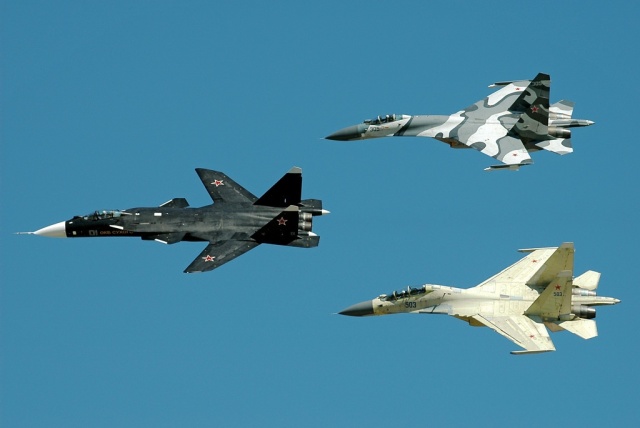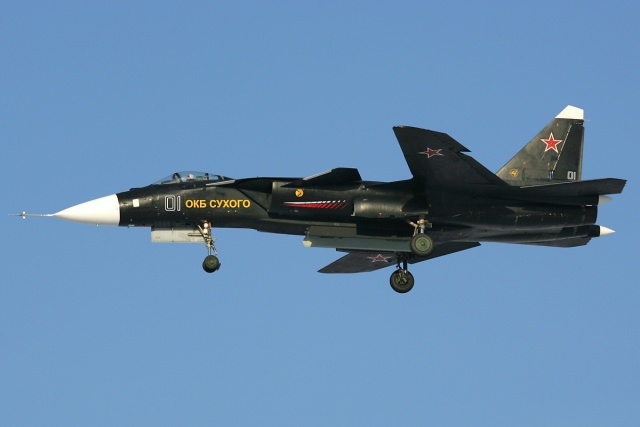The Su-47 fighter, first flown on September 25, 1997 by Igor Votintsev, a test pilot at the Sukhoi Design Bureau, is considered one of the most unusual aircraft. First of all, due to its main feature – the reverse sweep wing. The digital control system and composite materials have become less noticeable externally, but no less advanced technologies in the Su-47. The flight of the Su-47 did not go into production, the car was released in a single copy.
However, the technologies used on the Berkut formed the basis of the latest Russian fighter aircraft of the fifth generation Su-57 and the MS-21 airliner.History of creation
In the late 1970s, Soviet designers began work on the creation of a next-generation fighter. Leading design bureaus thought about the concept of a new car, offered their own appearance options and determined the main characteristics. According to the military, the new multifunctional fighter was supposed to develop supersonic speed in cruising flight modes, conduct all-angle shelling of air targets in close combat, and also have low visibility for radars. In addition to all this, one of the main requirements was supermaneuverability. It was this trait that determined the futuristic look of the new car. To make the fighter more maneuverable was an unusual design solution – a reverse sweep wing (CBS).
Work on this topic began in the Sukhoi Design Bureau in 1983 under the conditional cipher S-22. By that time, the work on testing and introduction of the basic Su-27 fighter into the series had already been completed. In this situation, on the initiative of M.P. Simonov, the Sukhoi Design Bureau received a task from the Ministry of Aviation Industry of the USSR to create an experimental aircraft with a reverse sweep wing (CBS). Subsequently, after the collapse of the USSR and the subsequent crisis in the aviation industry, funding for the project stopped, and work continued on the initiative of the Sukhoi Design Bureau. It was decided to stop at the construction of one prototype, which received the designation "C-37". Sukhoi Design Bureau managed not only to build a new car, but also to implement its flight test program.
 |
| Su-47. |
| Source: Anna Zvereva / wikimedia.org |
The plane took to the sky for the first time on September 25, 1997. The novelty was presented to the general public at the MAKS air Show in 1999 under the name C-37. The fighter received the name Su-47 and the nickname "Golden Eagle" in 2001 – for its ability to quickly change the direction of movement or angle of attack.
The plane wings forward
The Su-47 differed from its contemporaries in more advanced characteristics and was almost approaching the fifth generation. But the main feature of this aircraft is the reverse sweep wing (CBS). If the majority considers the BRAID simply as a stylish detail, which, of course, gives the aircraft an unusual appearance, then experts have more reasoned justifications.
Aircraft designers began experimenting with such a wing a long time ago. Back in 1944, the German Ju-287 bomber took off for the first time. However, he never "flew" to the series. Immediately after the war, KOS began to be explored in our country. For example, in 1947, a glider with a BRAID and a powder accelerator was created, which reached a speed of 1150 km / h. Similar experiments were carried out by both domestic and foreign designers. What attracted them so much to the models "with wings forward"? Without going into technical details, the following advantages can be noted: less air resistance, good "behavior" at large angles of attack, the leading edge deflected "inwards" for better unobtrusiveness. From these features, supermaneuverability also follows, even without the use of engines with a controlled thrust vector.
 |
| Su-47. |
| Source: Sergey Krivchikov / wikimedia.org |
The advantages of the reverse sweep wing smoothly flow into its main drawback, or rather into the technical complexity of the design. As the speed increases, the load on the wing increases, and it bends. They tried to cope with such a "self-destruction" of the wing by increasing the rigidity, which led to a heavier structure. Composites came to the rescue here – the Su-47 wing is half made up of them. The new technology of joining long composite panels made it possible to increase the rigidity of the structure without significantly increasing its weight. The Su-47 airframe consists of a total of 13% composites, which reduced the overall weight of the aircraft, as well as its radar visibility.
Thus, the Su-47 Berkut became the first domestic prototype of a combat aircraft to receive a "black wing". It was based on the experience gained in the creation of composite products for "Buran" in Obninsk NPP "Technology". The work on the wing for the Berkut made it possible to subsequently use composites from Obninsk to create the fifth-generation Su-57 fighter and the MS-21 airliner.
Despite the fact that the "Golden Eagle" did not go into production, this project can rightfully be called successful. Tests of the Su-47 allowed the designers of the Design Bureau of them. Sukhoi to work out a number of technologies that subsequently appeared in the fifth-generation fighter Su-57.

